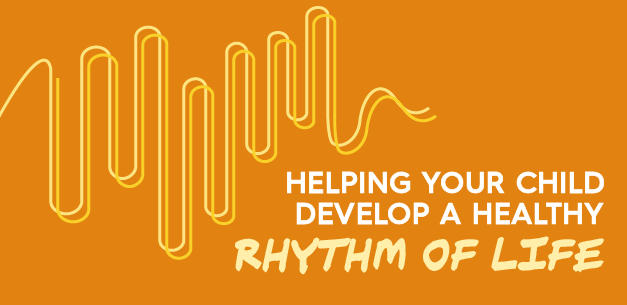Navigating the Noise: Helping Your Child Develop a Healthy Rhythm of Life
Have you ever watched a movie or television show and sensed there was something off? You know it’s there, but you can’t put your finger on it. Suddenly, you realize the audio and video are out of sync. The disjointed state between audio and video takes away from your ability to enjoy the program.
Adults encounter similar distractions. When you find yourself out of sync regularly, it disturbs a healthy, balanced rhythm of life which leads to stress, anxiety, and exhaustion. These feelings prevent you from enjoying life and indicate an adjustment to your daily pace and routine is needed. This off-kilter feeling isn’t limited to adults; children absorb the effects of a life out of rhythm as well, and they often lack the skills within themselves to identify, process, and correct their steps. It is up to you, as a parent, to assist your child in maintaining a positive rhythm of life.
Here are some ways you can begin to help your child walk in a rhythm of life that promotes spiritual, emotional, and physical well-being:
Model Time With the Lord
One of the most important things you can teach your child is a daily walk with the Lord. Time with him serves as the cornerstone of our lives. Everything else builds on his presence which naturally influences how you spend the rest of your time. It slows us down, shows us what’s most important, and helps us discern how to best spend our time. Model through your own time with the Lord, sit together as a family to learn from God’s Word, and teach your child how to read the Bible and pray.
Evaluate Your Own Rhythm
Are you trying to keep up with the crazy pace of an endless to-do list? Do you spend more time shuttling your kids here and there than you spend together as a family? Is your daily walk with the Lord minimized because you don’t have time to be with him? If the rhythm of your life is disordered and chaotic, your child will reflect what you do. Take some time helping yourself so you can effectively help your child.
Observe and Listen
Children don’t possess the same ability adults do to identify and talk about points of stress, anxiety, worry, or pressure. You must observe your child and listen carefully to him or her. Ask open-ended questions like, “How do you feel when we are really busy?” “What makes you feel afraid or worried?” or “What things do we do as a family that you enjoy/don’t enjoy?”. Pay attention to the answers, and don’t dismiss concerns as trivial. Watch your child’s behavior and ask yourself if headaches or tummy aches may indicate an out-of-sync rhythm.
Teach Good vs. Best
There are so many good things you can do with your time. But should you do all of those good things? Philippians 1:9-11 talks about things you need to be able to discern what is best. Developing a healthy rhythm means choosing the best things over the good things. You need to
teach your child how to do this. Maybe it means helping them choose one extracurricular activity rather than signing up for everything that sounds good or spending time with friends who build your child up instead of accepting every playdate invitation. God’s best will never fill your schedule to overflowing.
Control Your Calendar
You are the keeper of your family’s calendar, so it’s up to you to examine it for areas of unnecessary busyness. Your schedule affects your child. When you are constantly busy to the point of anxiety or exhaustion, your child feels it, too. Are there things you could let go of to free up time for rest? Can you set aside more unstructured family time to play together? Determine your priorities and make sure your calendar reflects them. As your child gets older, enlist his or her help as you plan your days and weeks.
Developing a healthy rhythm of life and helping your child learn to do the same takes time. If your family is out of sync, too busy, and too tired, start with one of the above suggestions. Your child will benefit as you learn to manage your own and your family’s daily routine. With your example and instruction, he or she will be better able to carry the skill into their teen and adult years.

